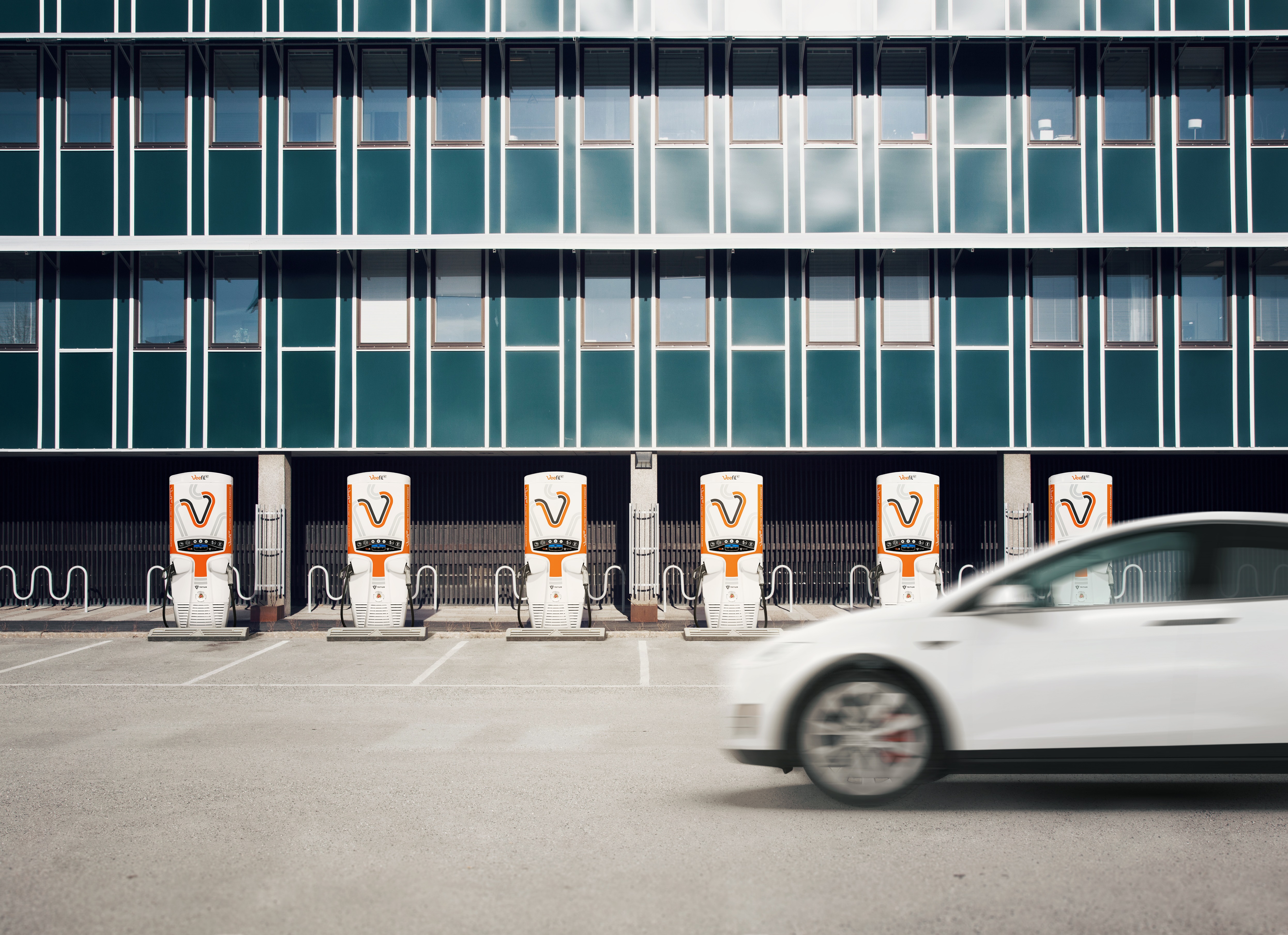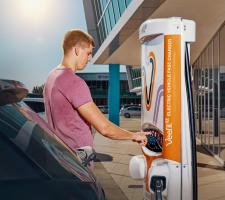
Electric vehicles (EVs) are widely expected to play a major role in the smarter, cleaner cities of the future. With no dirty tailpipe, EVs can help improve the polluted air of inner cities. And when deployed as widely shared assets – through car clubs, ride-sharing services and taxi fleets, or as part of public infrastructure – EVs might also reduce congestion.
If convenient door-to-door services can be provided at the point of need, fewer people will bring private cars into busy urban areas.
Even those cities that possess highly efficient mass transit systems are still likely to embrace EVs. While walking and cycling are healthy and should be encouraged, they will not suit individuals with limited mobility or limited time. Plus, smart cities should surely aim to reduce journey times, not increase them. Shared EVs are well suited to covering the first and last miles of journeys made by public transport.
EVs that are out of service for whatever reason are of no help to the citizens of smart cities, so technology that increases the availability, reliability and utilisation of shared EV fleets will have a vital role to play.
Quicker charging
For this reason, ultra-rapid charging of EVs is likely to become a key consideration. Quicker charging will help cities unlock maximum value from shared EVs, because each vehicle will spend less time charging and more time in service, either carrying passengers or standing ready to go. In particular, ultra-rapid charging will boost the availability of shared EVs at times of peak demand, where there may only be brief opportunities to charge between journeys.
A rapid top-up between one journey and another may not seem important, given the trend among today’s EV makers towards larger battery packs, capable of covering hundreds of kilometres on a single charge. However, today’s EVs tend to be focused on private ownership. For shared EVs, rapidly recharging the battery will confer several distinct advantages.
If a shared EV can begin every new hire with a full (or nearly full) battery – a minimum 80% capacity, for example – the result would be a more versatile and dependable service. Car-sharing becomes more attractive when users can feel confident that the vehicle they hire will be ready to meet their needs. So by always being charged enough to tackle the widest variety of journeys, from short commutes to longer trips, shared EVs should see greater uptake.
Raising utilisation – ensuring shared EVs earn revenue rather than sitting around charging – will directly improve the economics of car-sharing. Ultra-rapid charging may also fit with other aspects of car-sharing business models. Quicker replenishment may allow a service provider to deliver its business case with smaller batteries, for example, reducing the unit cost of each EV. Alternatively, quick charging may bring economies of scale, allowing one vehicle design to serve both local and inter-city journeys, removing the need to provide different vehicles with large and small battery packs.
Enabling ultra-rapid charging will naturally require high-power infrastructure as well as EVs built to handle power flows much higher than we see today.
Faster delivery
The chargers are capable of still faster delivery – up to 475kW, promising 200km of range in five minutes. However, no EV is ready to accept this rate, so the chargers are scalable from 175kW, providing future-proof technology which enables staged investment in suitable grid connections.
These levels of battery replenishment will fundamentally change how people perceive EVs and will change the way they are used. In busy cities, higher power flows will allow a given charger to serve a much larger volume of vehicles each day, with each individual charging session completed in a relatively brief interval, much closer to today’s refuelling stops.
In turn, this and the slim, compact styling of Tritium’s chargers will reduce the amount of real estate a city must devote to charging bays for a given population of EVs, and will also make capacity planning less of a headache. From an investment and electrical supply perspective, it is preferable to have a small number of highly utilised charging stations than a large volume of under-utilised outlets. Laying cables and installing the associated infrastructure to lightly-used locations is likely to be uneconomic, or at least slow to deliver a return on investment.
Higher charging rates might increase the scale of peaks in energy demand, though it is important to note that the rate of delivery will not inflate the amount of energy drawn. The total number of kilowatt hours needed to take an EV from A to B is governed by its efficiency, not how quickly the battery has been topped up. Indeed the ready availability of quicker charging may encourage the use of smaller, lighter batteries, improving efficiency and easing overall energy demands.
However, we can expect smart cities to deploy intelligent technology to tackle peaks in demand. Tritium’s vision is for energy freedom, providing flexibility in both the source and the use of energy. High-power chargers employing vehicle-to-grid (V2G) technology, for bi-directional flows, will unlock new freedoms by enabling ultra rapid movement of energy in either direction between EVs and the grid.
Distributed energy
For example, a fleet of shared EVs represents a substantial distributed energy store. Cars that tend to see low utilisation after the evening rush hour could release energy to support the evening peak in grid demand, and then be recharged overnight when grid power is plentiful. This would help flatten the grid’s daily cycle. Similarly, fleets of EVs could rapidly absorb and store energy from intermittent renewable sources such as wind and solar generation.
Ultra-rapid bi-directional technology would also enable extremely rapid energy transfer at a local scale. Imagine, for example, that a shared EV provider aims for all its cars to be offered with at least 80% charge. If a car arrives with only 40% reserve at a station where two other EVs have 100%, the stored energy could be quickly reshuffled to give all three cars 80%, with zero draw from the grid.
That scenario might be idealised, but the potential benefit of rapidly redistributing energy among plugged-in EVs, at times of high grid demand, is clear. A shared EV provider might, for example, relax battery service levels from 80% to 70% during rush hour, boosting the ability to pool energy across its fleet. The faster the chargers, the more quickly the system might respond to peaks and troughs in energy supply.
Fleets of shared EVs will also move stored power around a city independently of the wired infrastructure. Peaks in electricity consumption tend to occur wherever populations are concentrated for long periods, and vehicles tend to carry people towards those congregations. As a result, EVs will often be plugged in close to locations of energy demand, increasing their value in supporting the grid. Smart cities can take advantage of this proximity when deploying the energy added to batteries overnight.
Looking further ahead, once the majority of EVs are autonomous, vehicles will be able to move independently to support the grid – charging in locations where demand is low, or being summoned to areas of high demand.
Smart cities will flourish when they can bring new insights and intelligence into the built environment. Developed in the right way, EVs and ultra-rapid chargers can become key components of a versatile public infrastructure that both reduces burdens on the city and increases liveability.












